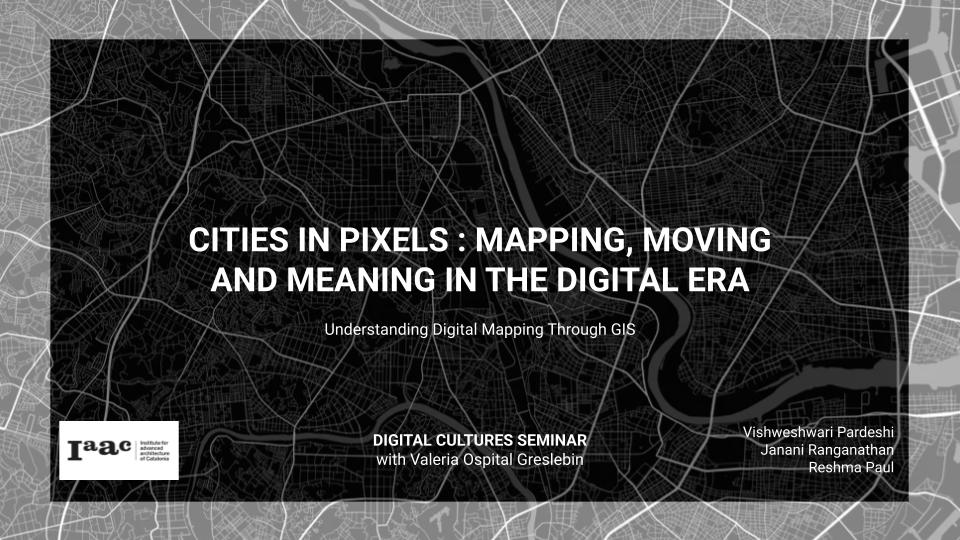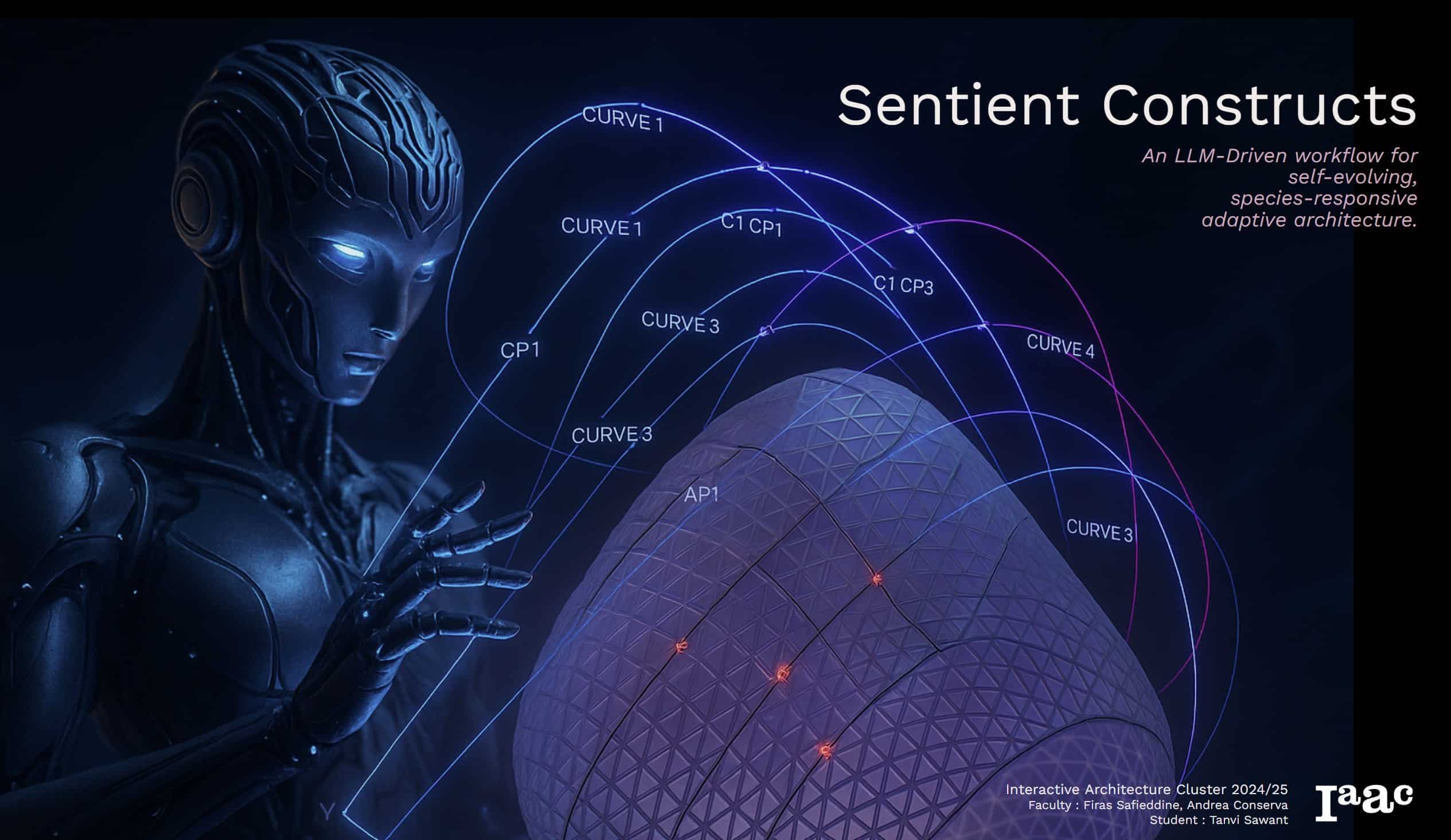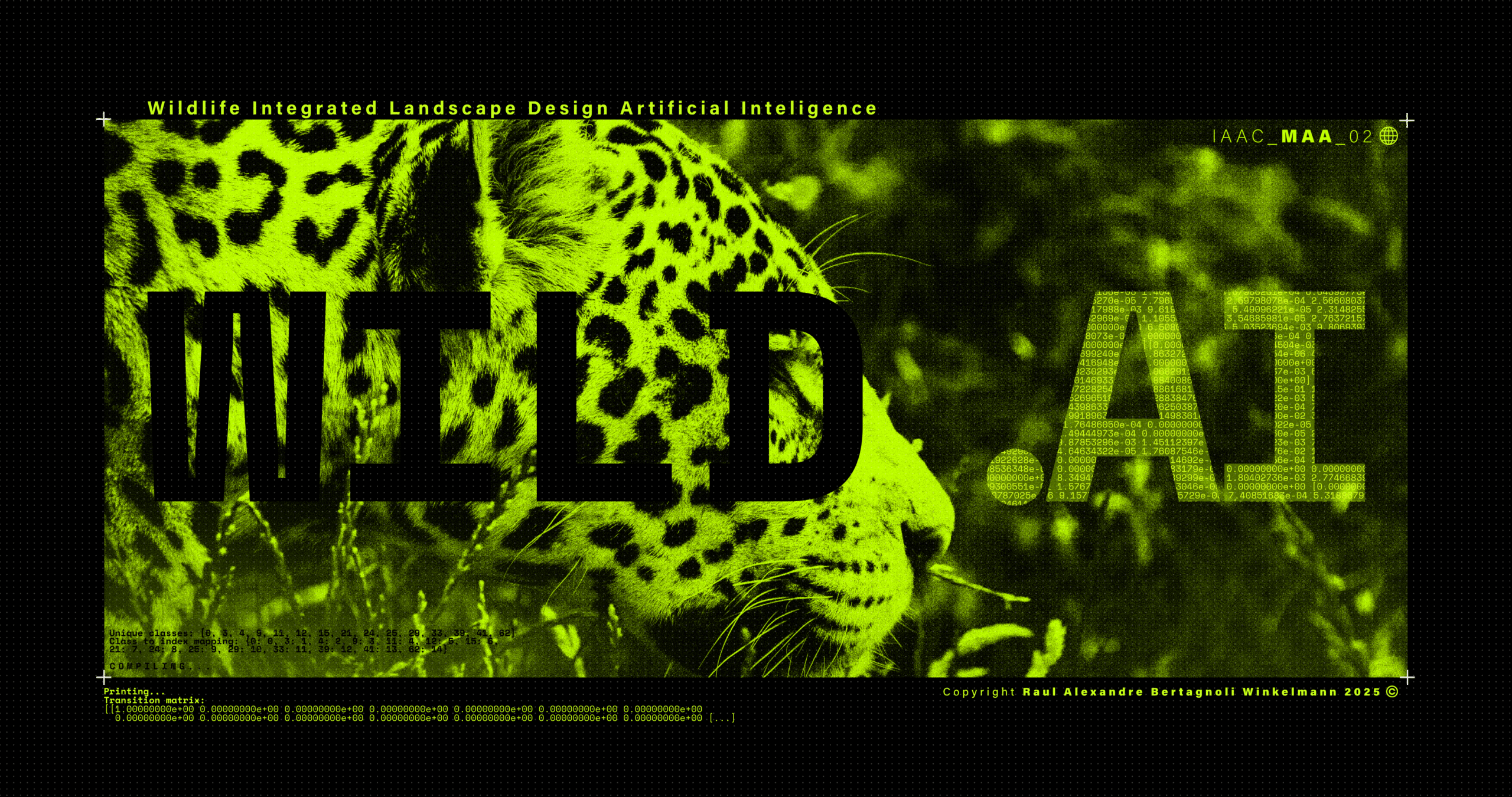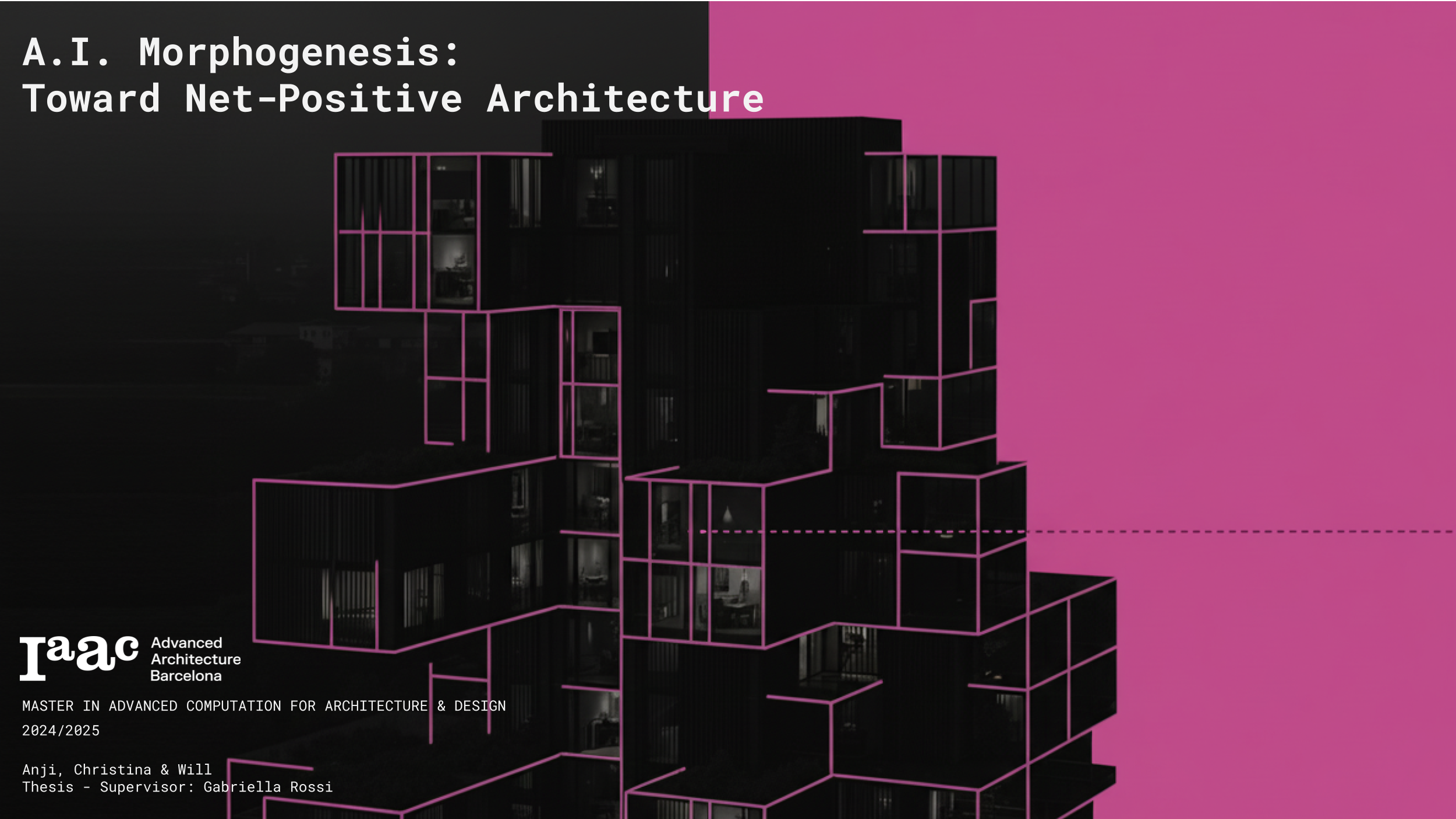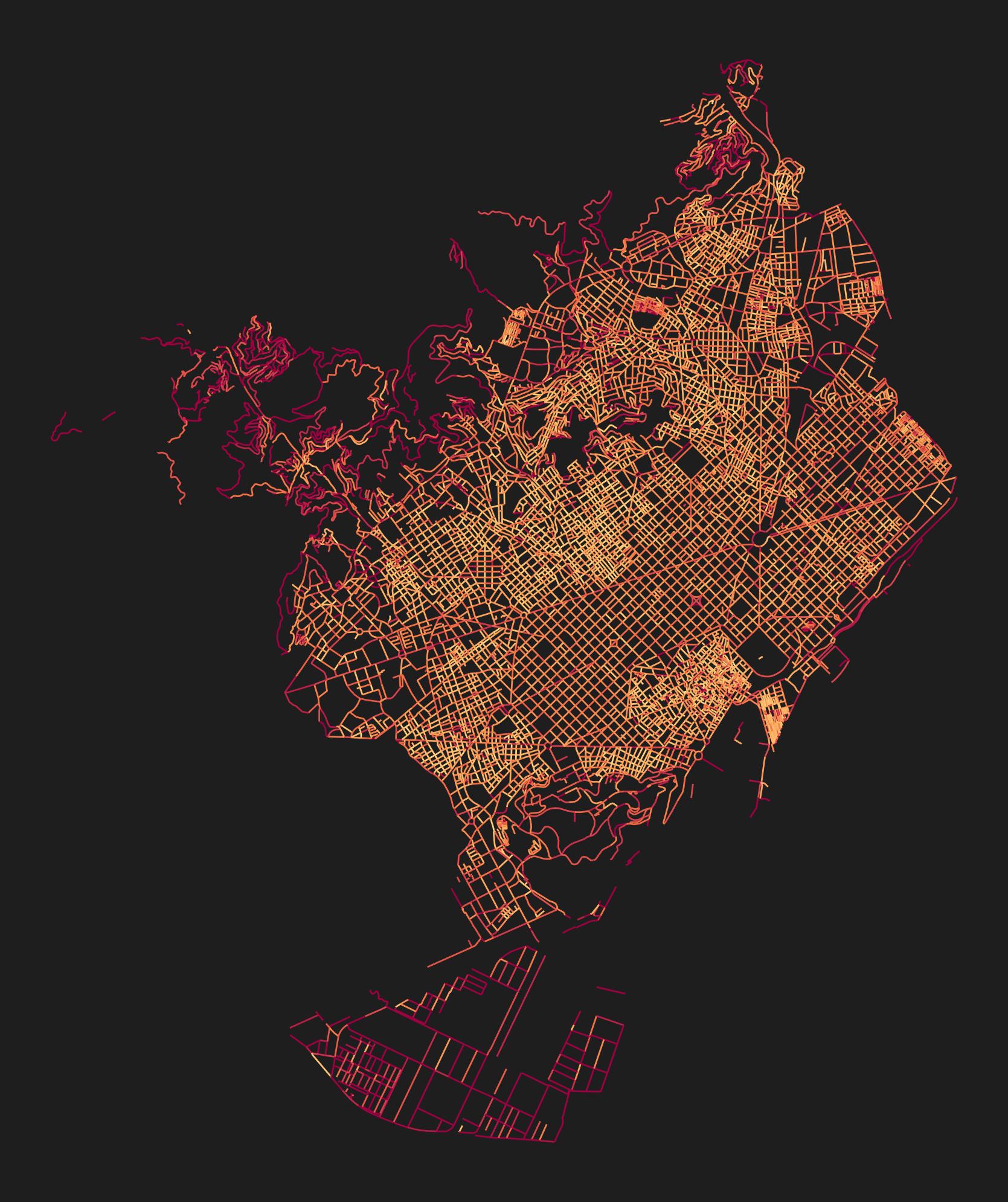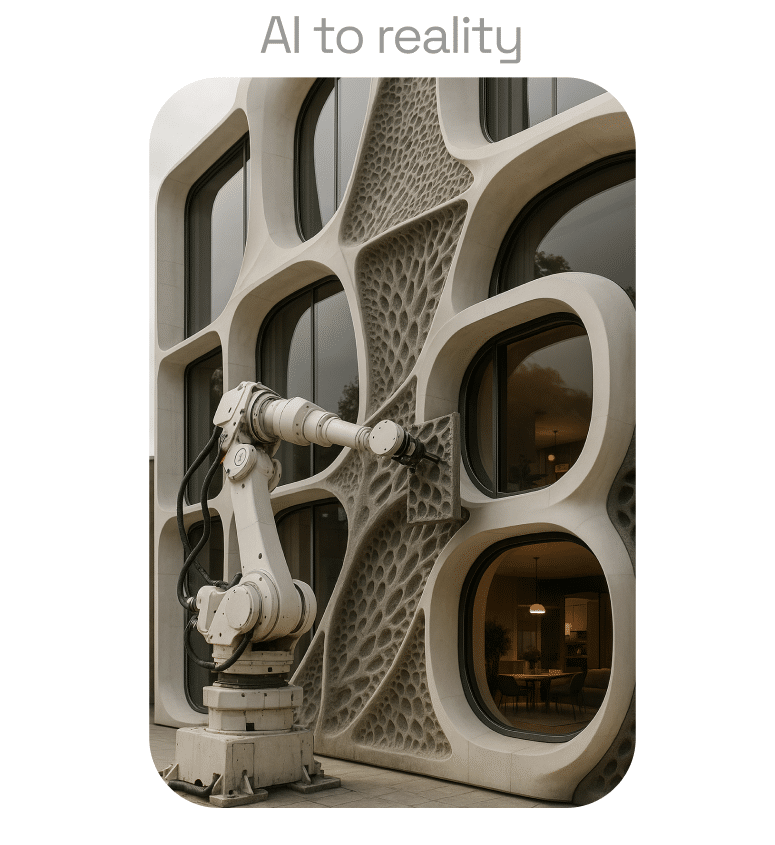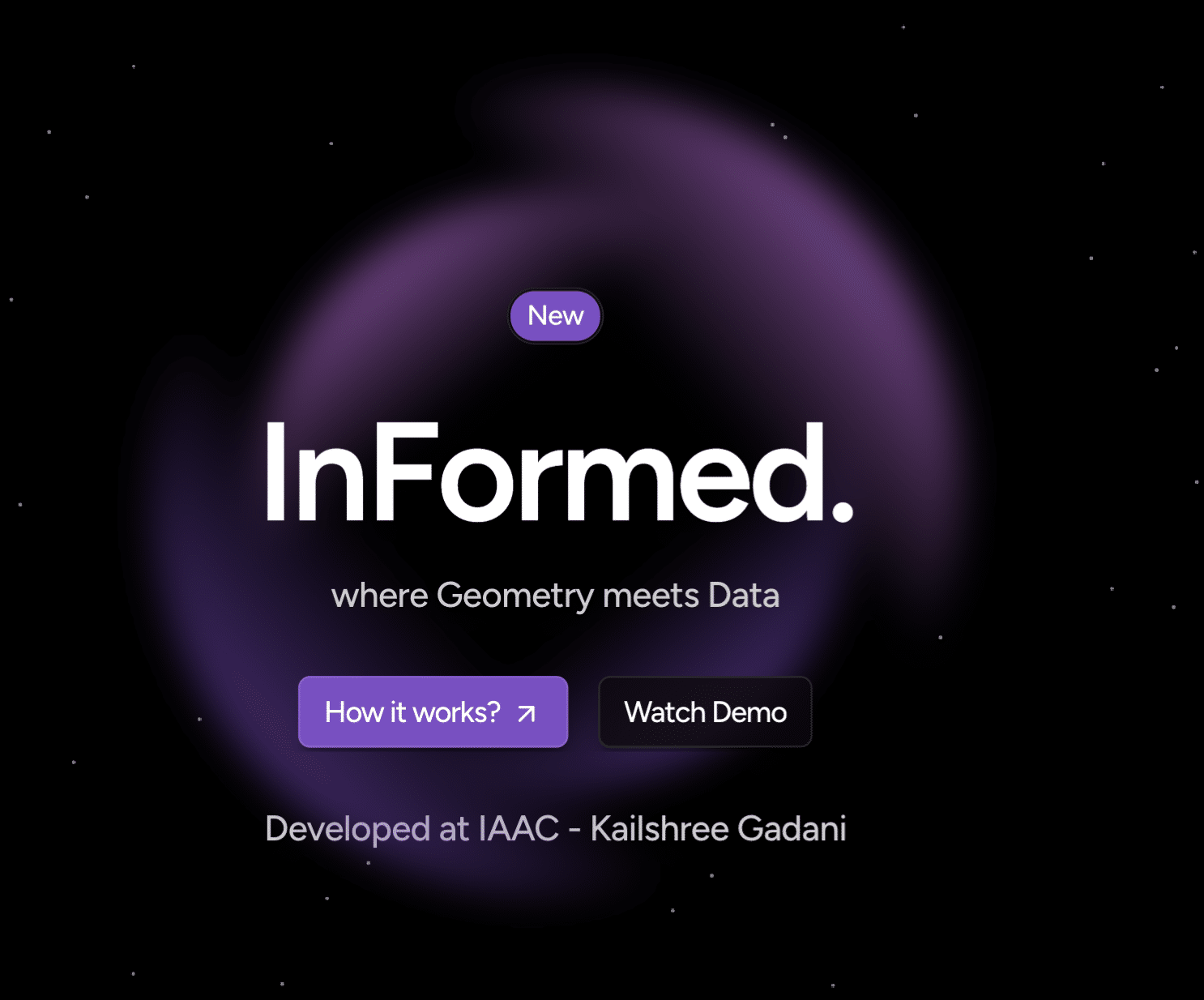Decisionless
An intelligent living system as the last decision you will ever make. Abstract This project explores Technology and Artificial Intelligence (AI) and their impact on architecture and urban living. Based on complexity theory, ecology, and AI discourse, it frames architecture as an adaptive, self-organizing system rather than a static object. The case study is Barcelona, … Read more
Cities in Pixels: Mapping, Moving, and Meaning in the Digital Era
In the age of digital urbanism, cities are no longer understood only through streets, buildings, or neighbourhoods—they are interpreted, navigated, and governed through layers of pixels, data points, and algorithmic models. Our visualization project, Cities in Pixels: Mapping, Moving and Meaning in the Digital Era, examines this transformation using Geographic Information Systems (GIS) as its … Read more
Silent Light
Introduction to Programming and Physical Computing Seminar Faculty: Daniel Mateos, Adai Suriñach, Antoine Jaunard Group Members: Amalia Anna Korgiala, Camilo Hernán Contreras Concept The project aims to design a sensor that can work with light or sound sensors, inspired by a library luminaire. The sensor can be placed in various areas and scales, such as … Read more
Matter Research Course 2025
There are several established building standards for earthen construction and for concrete 3D printed construction (3DPC). However, earthen 3D printing lacks global standards that define how materials should be tested, certified, or approved for construction. As a result, each project is evaluated independently, often referencing foreign or unrelated standards — this slows innovation and increases … Read more
Sentient Constructs:
An LLM-Driven and GAN-Inspired Workflow for Self-Evolving, Species-Responsive Adaptive Architecture Abstract Contemporary architecture remains predominantly anthropocentric, prioritizing human needs while neglecting the urgent ecological imperative to design for multispecies coexistence. In response to biodiversity loss and environmental degradation, this research advances a new framework for cybernetic architecture – an adaptive, intelligent, and ecologically attuned design … Read more
The ClimaColour Code
Abstract Environmental conditions are more often than not invisible and something that is felt rather than visually perceivable. The ClimaCode provides our spatial surroundings with their own language that enables them to better communicate with us as humans. By translating climatic conditions, such as temperature and humidity, into light, the device communicates its climatic ‘mood’ … Read more
Wildlife Integrating Landscape Design Artificial Intelligence – WILD.AI — Term_III
CONTEXT DYNAMICS METHODOLOGY ANALYSIS By subtracting different scenarios from one another: The differences start to become clear as to what areas are consisently lost vs what areas are inconsistently lost. The latter being the one where planners and ecologists should focus their efforts the most if aiming to potentialize action. The figure becomes even clearer … Read more
SEMIOCITY
Semiocity — Semiotic-Aware Urban Image Generation This is part of the Academic work at Iaac Barcelona for the Master’s Program im Advance Computation for Architecture and Design 2024-2025 Repository for the Master Thesis “Semiocity: Generating Semiotic‑Enriched 3D Models from Text Inputs” Degree: Master in Advanced Computation for Architecture and Design (MaCAD), Institute for Advanced Architecture of … Read more
Mind vs Machine: MENTOR
A Multi-Agent, Socratic, Cognitive-Preserving Tutoring System for Architectural Education The Silent Crisis Picture this: A design student faces a challenging architectural problem. They need to create a sustainable community center that harmonizes with its urban context while meeting complex programmatic requirements. In 2023, they would likely turn to ChatGPT, type their question, and receive a … Read more
A.I. Morphogenesis
Toward Net-Positive Architecture MASTER IN ADVANCED COMPUTATION FOR ARCHITECTURE & DESIGN 2024/2025 Anji, Christina & Will Thesis – Supervisor: Gabriella Rossi We are facing an urgent climate crisis, one that demands architecture to move beyond conventional sustainability toward regenerative, net-positive approaches. Current design practices often struggle to integrate environmental and context-aware analysis seamlessly because they … Read more
ThinkSpaceAI
Turning Natural Language into Architecture Designing a house is never just about walls and windows—it’s about translating human stories into spaces that feel alive. Clients describe routines, aspirations, and cultural practices. Architects then face the challenge of turning those narratives into coherent layouts that also respond to site, climate, and context. Most computational tools fall … Read more
Andromeda
Andromeda is a Rhino-native copilot that turns briefs, context, and massing into a single, interpretable graph so designers can enrich masterplans, evaluate KPIs, and bake results back to Rhino, without leaving their workflow. Built for early-stage masterplanning, it aims to raise social value, connectivity, accessibility, and overall urban quality by unifying data, guiding program allocation, … Read more
Urban Climate on Graphs: From Form to Comfort
ABSTRACT This thesis investigates the relationship between urban development patterns and outdoor thermal comfort, with a focus on Mean Radiant Temperature (MRT), a key factor in calculating the Universal Thermal Climate Index (UTCI). While graph-based approaches have long been used in spatial analysis (e.g., space syntax, circulation networks), this research extends the application of graph … Read more
From Pixels to Parameters: transforming AI image to editable facade geometry
ABSTRACT Recent developments in generative artificial intelligence, particularly diffusion models such as Stable Diffusion and DALL·E, have enabled the creation of visually compelling architectural façades from text-based prompts. While these outputs are expressive and stylistically diverse, they remain fundamentally unstructured, lacking spatial intelligence, semantic clarity, and geometric editability. This limits their integration into architectural design … Read more
InFormed
Manual floorplan generation for high-rise residential buildings is labor-intensive and often overlooks key environmental parameters, limiting the ability to quickly assess performance-based design alternatives. Demo :



